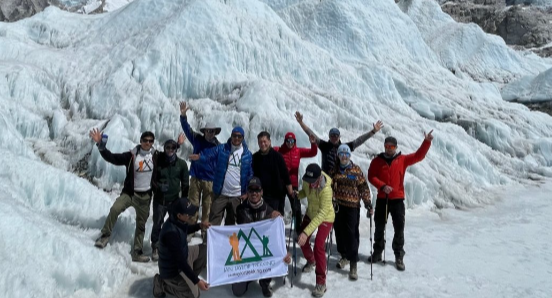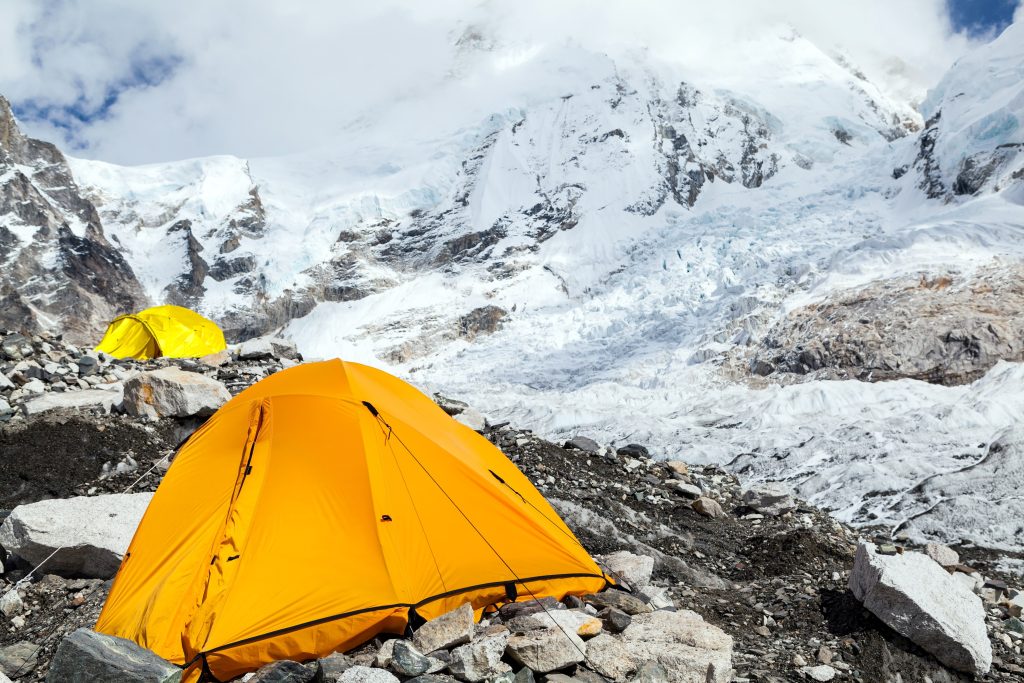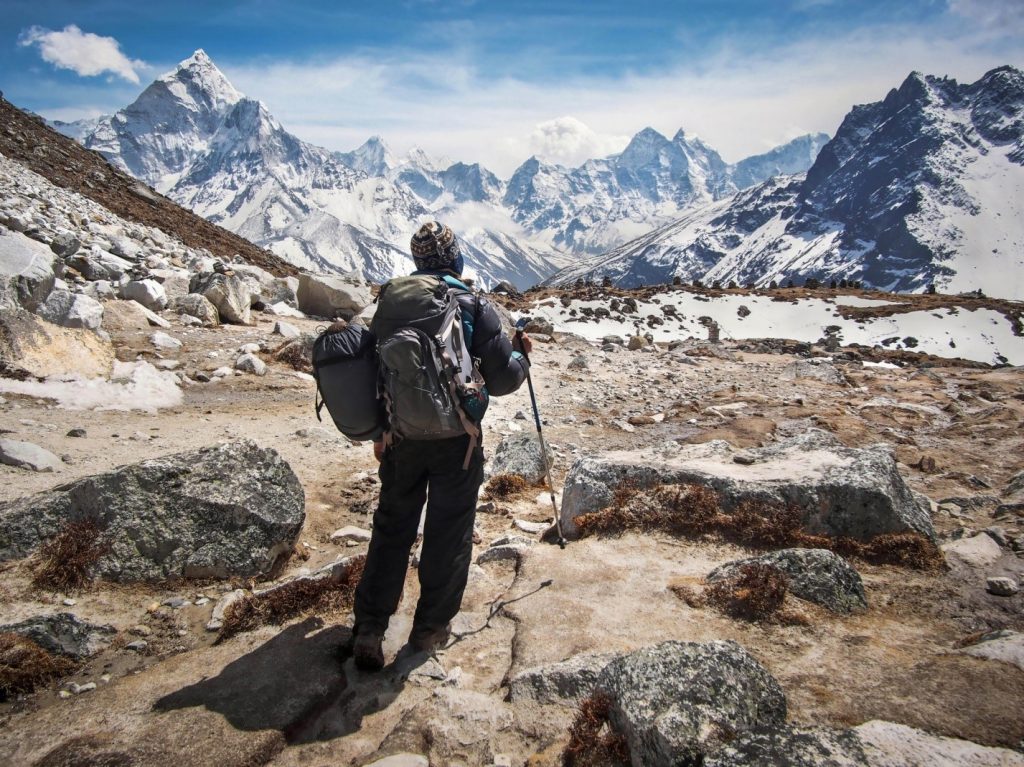
Everest base camp is one of the most popular and challenging base camps to trek to. While a lot of trekkers who don’t have prior experience in trekking tend to go there during peak months, hoping to find convenience in every possible way, some adrenaline junkies tend to want to make their trek challenging and push through their journey during winter months. Though winter is the most uncommon month to want to go for an exploration, it is the best choice to make an adventure worth remembering for a lifetime.
(Everest Base Camp)

If you are one of those mountain enthusiasts who wants to explore the best with the most thrill, then you should definitely try your hands at Everest base camp trek in winter. Make sure to read till the end of this article to know every tip and challenges for Everest base camp trekking in winter!
Tips for Everest base camp trekking in winter
There are a few things you need to remember before you go to the Everest base camp trek in winter. Some of the most crucial things to remember are:
Wear adequate layers: You should keep in mind that you are going to an extremely high altitude and a very mountainous area. This means, you will have to suffer from coldness if you neglect what you are wearing during your time on the trek. Hence, make sure to wear warm thermal clothes, a proper down jacket, and a suitable trekking boot with warm socks. Also, you need to wear double layered gloves and caps at all times. Layering clothes and footwears help protect you from frostbites and overall, the cold climate.
Trek with a group: This tip is applicable not only for beginners but also for those who have been trained as a trekker. Going to a location as dangerous and challenging as the Everest base camp is risky. If anything, going the extra mile to prove one’s potential won’t take a trekker too far. Trekking with a group means that you will get company, assurance when times get tough, as well as a sense of security.
Acclimatize properly: Keep your body acclimatized and habituated to the changing attitude throughout the trek. If you rush yourself to get to the destination quickly, you will go through a lot of issues in breathing and walking to the end destination. Acclimatization helps your body become familiar with the changing altitude with time and you will be facing ease to a great extent even after you reach the Everest base camp.
Drink plenty of water: Staying hydrated is very important for trekkers. When you neglect your need to keep your body hydrated, you are pushing yourself behind intentionally. Drinking enough water keeps you active and healthy throughout the journey.
Avoid caffeine: Caffeinating your body whether by coffee or alcohol can be toxic in the long run. You have to keep your body as caffeine free as possible. One of the main reasons as to why you should avoid drinking caffeine is because you need to wake up early in the morning to start your trek every day, and when your body is caffeinated, you won’t be able to sleep properly, hence leading to body aches.
Plan extra days: Do not limit your mind to thinking you will be on the trek for only the period that has been stipulated. You should always plan extra days, whether it is staying for additional days in teahouses and lodges for acclimatization or delaying your trek. Safety and convenience should always be your first priority.
Carry basic first aid tools: Carrying basic first aid tools means that you are prepared for the unfortunate events that may come your way. First aid tools keep you covered during tough times and help you avoid damaged wounds.
Choose only a reliable trekking company: Do a proper research on the trekking company you are opting to get service from. You cannot blindly rely on just any company you find during your search for the right one. If the company you are looking to choose for your trek has a good social profile and interesting offers, then you can proceed to ask them for prices and other factors that may come to your benefit throughout the trek. After seeking a few companies, you can finally settle for the best one.
Challenges for Everest base camp trek in winter
There are some challenges that trekkers have to face when they are on the Everest base camp trek in winter. Some of the challenges are given below:
Extreme cold: When you go to the Everest base camp trek during spring or fall, you won’t have to face as much cold. But, going to the Everest base camp, which is one of the most mountainous locations in the whole world, that too at a very high altitude, during winter, you should be prepared for extreme cold. The weather may not always be bad for the trekkers, but the temperature drop definitely is. Staying prepared with warm layered clothes and adequate equipment might not always be enough, and trekkers are likely to feel cold regardless of how well prepared they are during the nighttime.
Delay in flight: Flights are very often delayed when you are hoping to fly to Lukla from Kathmandu. Lukla airport is one of the least developed and least facilitating airports in the whole world. During peak seasons and winter (which is considered an off-season), there aren’t as many flights heading to Lukla airport. Hence, even your trekking agency cannot always manage flights as per your wish for the winter trek.
Limited number of teahouses: There are plenty of teahouses to stay in around the Everest base camp, but, when you visit there during winter, a lot of the tea houses remain closed due to the extreme cold. Even if some tea houses are open, it will be hard to find accommodation after reaching the location itself since there are plenty of other trekkers who come for winter treks. It is necessary that your trekking agency make a booking for your accommodation before the trek.
Altitude sickness: There is a bigger chance of altitude sickness when you go to the Everest base camp during winter. The freezing cold in the higher altitude location increases the chances of altitude sickness to a great extent. The cold, as it is, suffocates the trekkers and the high altitude makes the experience worse.
Short days long nights: During winter, the days are short while the nights are long. Though you will be completing your trek during the daytime, you won’t get much time to walk. This means you have to start at the earliest time in the day and get back to a teahouse or your resting place as soon as possible in order to avoid both the dark and the chilling cold nights.
Snowy trails: The trails of the Everest base camp are covered with snow during the wintertime. It is almost impossible to avoid snowy trails as the higher you go, every path is covered with snow and ice. This increases the likelihood of trekkers slipping and catching an accident. And trekking becomes tougher than any other season.
Lack of flora and fauna: You won’t be able to witness as much flora and fauna during winter as you do during spring and fall. The sight of the mountains is very pleasing, but you don’t really get the chance to relish other beautiful aspects of the Everest base camp since winter leads plants and trees to die while animals and birds hibernate or shift from their natural habitat. Anyone who is expecting to catch sights of amazing floral and animal species should keep their expectations low during their winter trek.
What is the most common time for winter trekking to Everest base camp?
(Trekker on Everest Base Camp)

The most common times of the year for winter trekking to the Everest base camp are January and February. You may feel extreme cold when you go on the trek during January as it is the peak winter month among every other month. When you go trekking to Everest base camp in February, you won’t be facing as much issue when it comes to extreme cold as spring will be near. Though February is the best for the winter trek, there are many who want to push their limits and go on the trek in January. Many trekkers have been able to excel their winter trek during the first month of the year.
One of the best parts about these months is the clear weather and less likelihood of rain. Winter is not only about cold and chilliness in the mountains, it is also about staying secure from the chances of getting drenched during the trek. While there are chances of snowfall and, in rare but extreme conditions, avalanches in the upper mountain areas, the weather is most beautiful and cool in general.
The days are bright and sunny with mildly chill air and freshness in the surrounding. Temperature is usually somewhere around or exactly 4 degrees during day time. During the nighttime, the temperature may fall below minus 14 degrees. This leads to an unbearable cold for the trekkers. Hence, it becomes crucial for them to book for their accommodation beforehand. Making end moment appointments can often cause one to not find a room.
Moreover, if you want to excel your trekking journey, you have to stay prepared from the beginning. Going on a winter trek is no joke to anyone. Especially if you are a beginner, you have to pay attention to training both your mind and body for what awaits you in your winter trek to the Everest base camp.
Why should you trek to Everest base camp during winter?
There are some good reasons as to why you should trek to the Everest base camp during winter, some of the reasons are:
Cheap flight tickets: Though it is not as easy to find flights, when you do, you will have to pay less than you would if you go to the Everest base camp trek during peak seasons. Winter means there will be fewer trekkers heading to Lukla, meaning the demand for air tickets is low. The low demand always results in low airfares.
Less crowded trails: The trails of the Everest base camp often become difficult to cover when there are many other trekkers heading towards the same destination. Trekkers tend to avoid Everest base camp trek during winter. Therefore, there are always a lesser number of trekkers in your way. Lesser crowds very often ensure more comfort and convenience for trekkers. And the rush is just as low among the trekkers.
Discounts: Trekkers will be able to enjoy discounts when they are trekking to the Everest base camp during winter. Discounts are applicable during this season because of the low demand for treks among trekkers. Trekking agencies try to lower the amounts of costs in order to pull more clients. Winter treks can go easy on the trekker’s budgets in so many ways.
Clear and pristine view: The sky is never clouded during winter. Since trekkers will be trekking in the daytime, they will get an opportunity to explore the beauty of the Himalayan region to the fullest. There is no chance for rain, which further makes your experience of the trek better.
Conclusion
Winter treks are very often overlooked by trekkers due to the risks associated with it. But when a trekker is known to know the tips and challenges for Everest base camp, trekking during winter, there is a great chance they will complete the trek amazingly. Issues are present regardless of which season you go to the base camp. Awareness of what may go wrong and what you should do right is what makes the difference. And, when you come to think of it, there are as many or even more pros as there are cons in EBC winter trek.
Read more https://lifehimalayatrekking.com/blog/everest-base-camp-trek-in-december.html
